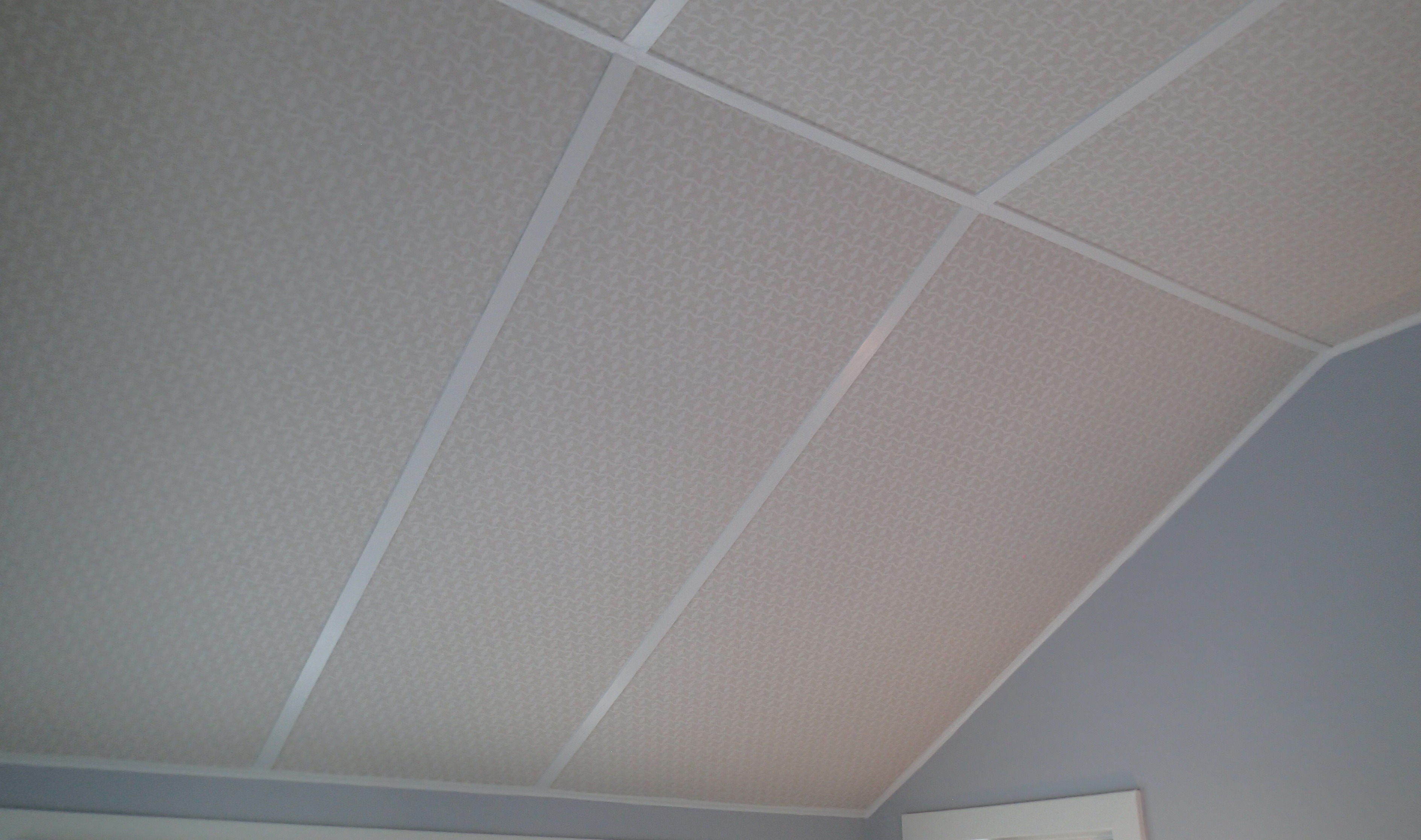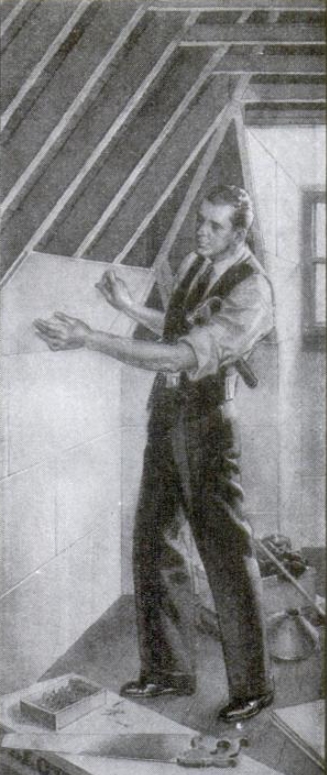

In the early part of the twentieth century, there were several types of wallboard materials that were quite different than the traditional interior wall finish - plaster. Most were made with compressed wood fibers or pulp. Some were smooth surfaced, some manufactured with a wood-grain texture and some were striated to look like parallel boards.

The panels were simply nailed to studs and joists in unfinished work or nailed over previously finished surfaces. These products were advertised as inexpensive, light, easily handled and installed as compared to the process of plastering over lath. But finding it behind plaster now is rare. It’s much more common to find it with joints covered with thin wood batten strips and the whole surface was then painted.
There were many types from different manufacturers, but the most well-known product today is Beaver Board. Over a century after this product was first developed, most folks refer to all of these older fiber board products as Beaver Board. Beaver Board probably just had the best marketing.
In 1903 J. P. Lewis, a paper product maker, glued layers of matboard used for picture framing to make boards for lining his attic. This took place in Beaver Falls, NY. In 1906, he formed the Beaver Manufacturing Company. Later wallboards made of layered wood fibers include Upson Board, Cornell board, Sterling, and Fibro-Wallboard.
Homasote®, made from recycled paper waste, is often proclaimed as the original fiber-board wall product. In 1909, the Agasote Millboard Company began manufacturing panels used for lining railroad carriages then automobile tops, but it wasn’t until 1925 that it was introduced as a building product marketed as Versatile Homasote® Board. And you thought it was only for model railroad layouts.
Some other wallboard products include Peerless and Utility Wall Board, which were made from cardboard layered with asphalt. Fiberlic was made of fibers from tree roots. Celotex, a name now associated with modern insulation board and other building products, was originally a fiber board made from the waste of processed sugar cane. It is the most common fiberboard that I have found as a plaster base. Celotex boards were marketed as “insulating lumber”. One advertisement from the 1920s claimed that when used in chicken houses, “hens will lay more eggs in winter”.
I only find an occasional modest home that has all the interior walls made from these early fiber-board products. It’s usually because it started out as a summer cottage. The most common place to find it is in the attic of older homes that weren’t originally finished. Also, many Cape Cod style homes were built in the housing boom after World War II. It seems to have been an option to leave the upstairs of these capes unfinished until there is a need for additional bedrooms. These wallboards were easy enough for someone handy using only a handsaw and hammer.


Bill Kibbel is a consultant and an inspector of historic homes
& commercial buildings at Heritage Building Inspections.
This website was built with Mobirise